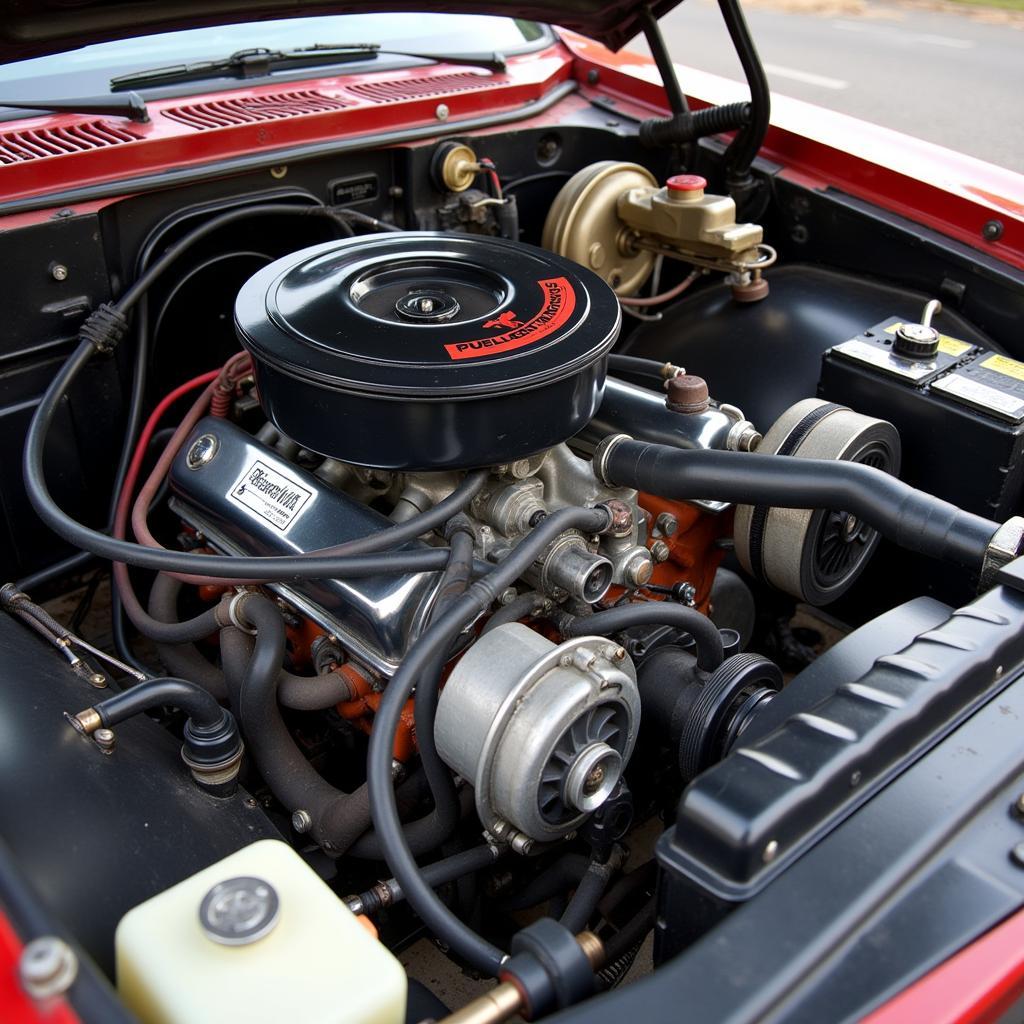The 1980s: big hair, neon colors, and… unreliable cars? How unreliable were US cars in the 80s? This question resonates with anyone who remembers the era or has heard tales of its automotive woes. This article dives deep into the reality of American car reliability during that decade, exploring the factors that contributed to this perception and examining whether it was entirely justified.
Decoding the 80s Automotive Landscape
The 1980s was a period of significant transition for the US auto industry. Facing increasing competition from Japanese automakers, American manufacturers struggled to adapt quickly. This led to a perceived decline in quality and reliability compared to their foreign counterparts. Factors like rising fuel prices, new emission regulations, and evolving consumer preferences all played a role in shaping the automotive landscape of the decade.
The Rise of Japanese Imports
Japanese car manufacturers, like Toyota and Honda, gained significant market share in the US during the 80s. These brands built a reputation for fuel efficiency, reliability, and affordability, qualities that resonated with American consumers, especially during a time of economic uncertainty and fluctuating gas prices. This competition forced American manufacturers to re-evaluate their strategies and invest in improving their products.
Quality Control Issues and Cost-Cutting Measures
In an attempt to compete with Japanese imports on price, some American manufacturers implemented cost-cutting measures that, unfortunately, compromised quality. This led to issues with reliability and durability, further solidifying the perception of inferior American cars. These issues ranged from minor annoyances to major mechanical failures, contributing to consumer frustration and distrust.
The Impact of New Technologies
The 80s saw the introduction of new technologies like fuel injection and electronic engine controls. While these advancements ultimately improved performance and efficiency, they also introduced new complexities that could lead to problems if not properly implemented or maintained. Early versions of these systems were sometimes prone to malfunctions, adding another layer to the reliability concerns of the era.
 Early Fuel Injection System in a 1980s Car
Early Fuel Injection System in a 1980s Car
Were all US cars unreliable in the 80s?
While the perception of widespread unreliability existed, it’s important to note that not all American cars were equally problematic. Certain models and brands maintained a reputation for quality and durability, even during this challenging period. Furthermore, many of the reliability issues were related to specific components or systems, rather than being indicative of a complete failure of the entire vehicle.
The Role of Maintenance
Proper maintenance played a crucial role in the longevity and reliability of any car in the 80s, regardless of its origin. Regular oil changes, tune-ups, and timely repairs were essential for preventing problems and ensuring optimal performance. Neglecting these essential tasks could exacerbate any existing weaknesses and contribute to premature failures.
Comparing Apples to Oranges: Different Standards
It’s also important to consider the context of the time. Compared to modern cars with advanced diagnostics and sophisticated engineering, cars from the 80s, in general, required more frequent maintenance and were more susceptible to wear and tear. Comparing reliability standards across decades isn’t entirely apples to apples.
How Unreliable Were US Cars in the 80s: A Summary
So, just how unreliable were US cars in the 80s? The answer is complex. While the decade certainly presented challenges for the American auto industry, leading to a decline in perceived reliability compared to Japanese competitors, the situation wasn’t as black and white as some might remember. Quality control issues, cost-cutting measures, and the growing pains of new technologies contributed to the problem, but not all American cars were equally affected. Regular maintenance and proper care could significantly impact a car’s longevity and performance, even during this era.
 A Classic American Car on the Road in the 1980s
A Classic American Car on the Road in the 1980s
“The 80s were a learning curve for the American auto industry. They had to adapt to new competition and changing consumer demands. While there were certainly reliability challenges, it ultimately led to improvements in later decades.” – John Davis, Automotive Historian.
FAQ
- Were all American cars bad in the 80s? No, some models and brands maintained a good reputation for reliability.
- Why were Japanese cars so popular in the 80s? They were known for fuel efficiency, reliability, and affordability.
- What were some common problems with American cars in the 80s? Issues with fuel injection systems, electrical components, and overall build quality.
- Did maintenance affect reliability? Yes, regular maintenance was crucial for any car in the 80s, regardless of origin.
- How does 80s car reliability compare to today? Modern cars are generally more reliable due to advancements in technology and manufacturing practices.
- Are there any reliable American cars from the 80s still on the road? Yes, with proper care and maintenance, some models have proven to be quite durable.
- What impact did the 80s have on the future of American cars? The challenges of the 80s forced American manufacturers to innovate and improve quality in subsequent decades.
If you need further assistance, please contact us via WhatsApp: +1(641)206-8880, Email: [email protected] or visit us at 276 Reock St, City of Orange, NJ 07050, United States. We have a 24/7 customer service team ready to help.


